🎲 Quantum Dice

The world is made up of some primitives like atoms, muons, quarks, etc - and the visionary birds & hardworking frogs of the world have been working round the decades hunting them down! Historically the hunt works something like this:
- The cloud chamber was invented. It enabled us to detect elementary particles.
- ~1930(?): Dmitri Skobeltsyn created an advanced cloud chamber by adding magnetic field. He saw
anti-matterfor the first time - but thought it was a fluke in apparatus. - 1931: Dirac cooked up some Maths to explain a bunch of particle interactions & his equation had an unexplained negative value solution - so he said that anti-matter should exist.
- 1932: A year later, Carl Anderson did the Skobeltsyn's experiment and conclusively found the positron:e+; the anti-matter twin of electron:e-. Carl was later awarded the Nobel prize.
I - The Standard Model
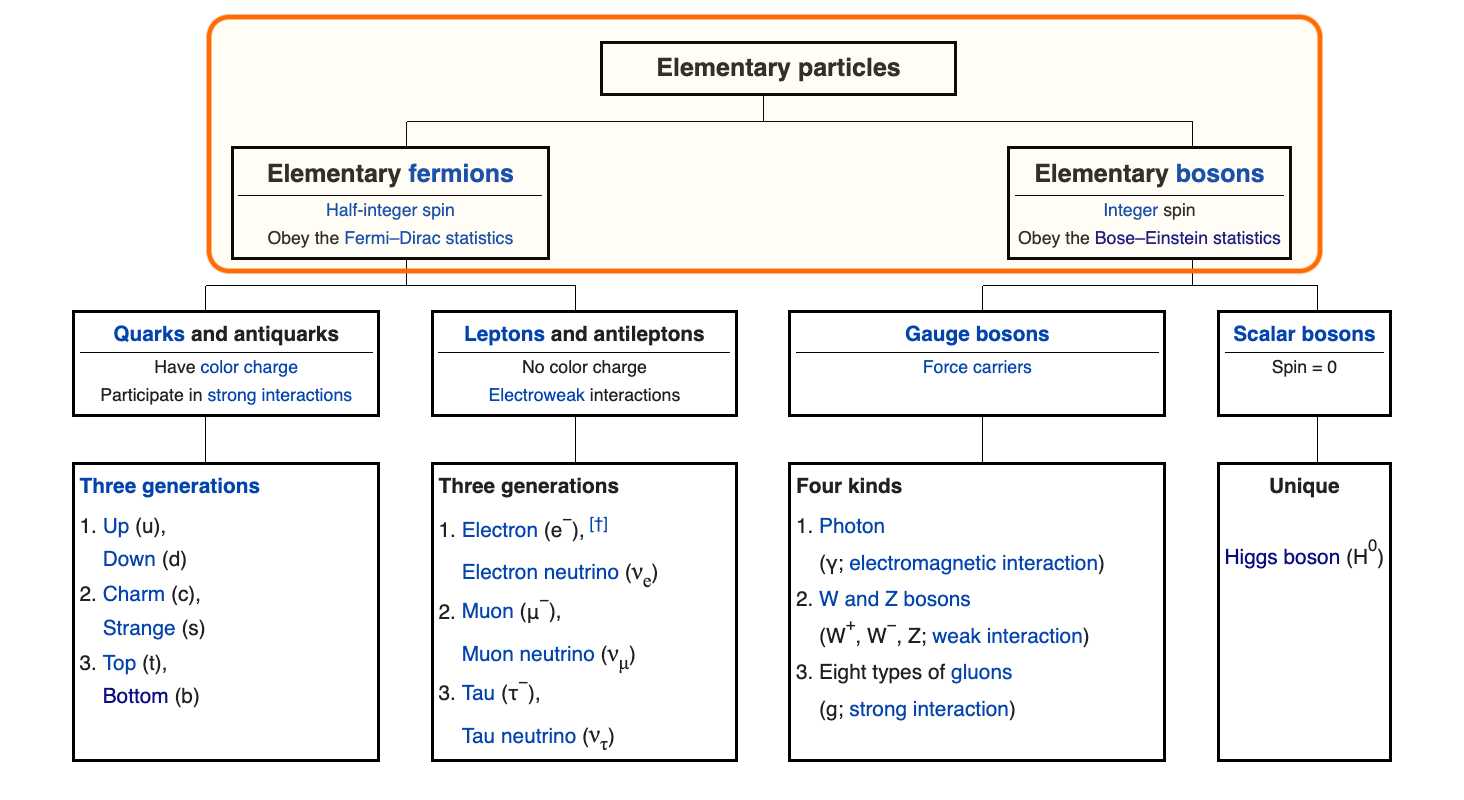
A whole lot has happened since then. With advances in measurement & theory; we have the standard model of particle physics. This is something like the level-0 periodic table. By the same analogy the level-2 periodic table would be a map of all types of cells & would gradually shift branch to biology.
II - Dice: A quantum particle
Today we are concerned with the 2 major types of elementary particles - fermions & bosons. We shall treat a dice as a quantum particle which can be in one of 6 quantum states with equal probability. We shall take 2 dice which can be in states: A1, A2, ... A6 & B1, B2, ... B6.
A key difference b/w fermions & bosons is that when you smoosh 2 of these in a system - for example (A2, B3), the following is literally true about God & dice*:
- Fermion-ic Dice: God knows which one of the dice says 2 & which one says 3. Even if they switch states, God knows about that too.
- Bosoni-ic Dice: Even God does not know which one is in state-2 & which one is in state-3. Further, there are no two ways this can happen. The two dice have fused into one quantum system & they are indistinguishable.
This property of God has profound implications on the mathematics of bosons. This was first figured out by Satyendra Nath Bose & the current scheme of things works like this:
- Fermions obey Fermi-Dirac statistics.
- Bosons obey Bose-Einstein statistics.
III - The Mathematics
Let's talk about 2 dice games like catan & craps. Every turn a player rolls a pair of dice & sums the numbers from the two dice. The sum is used to further determine actions of the game. Here is a chart of how many ways one can roll various sums of two dice:

There are 6 ways to roll a 7 | 5 ways to roll a 6 & so on. Another way to see it in numbers would be:
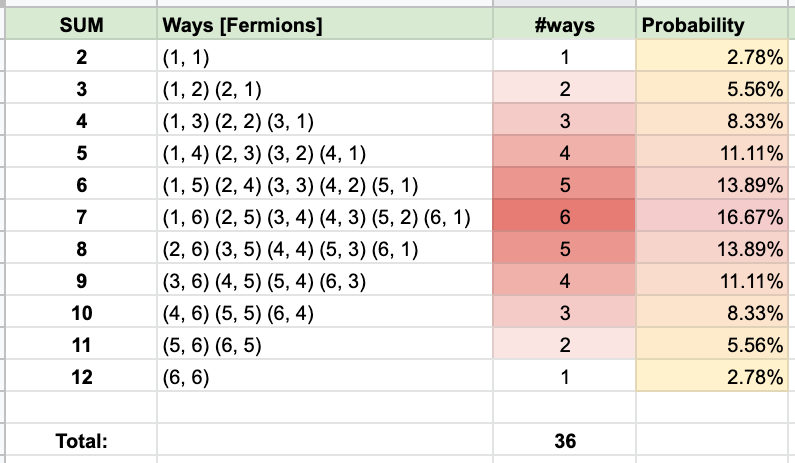
However, this is assuming that our two quantum dice Alice & Bob are fermions. What happens if they are bosons? The maths follows along with the discovery of Bose about indistinguishability. There are no longer 6 ways to roll a sum of 7; there are only three. i.e (A6, B1) = (A1, B6) if the dice are bosons. Here is the chart for a roll of 2 boson-ic dice.
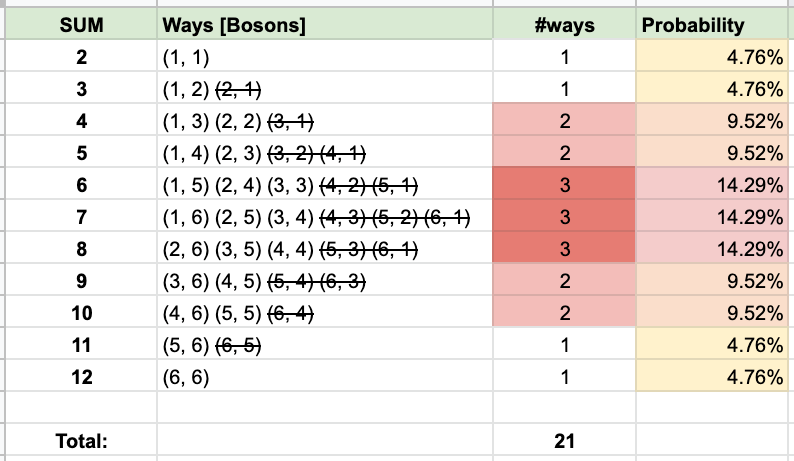
The Problem: Is it possible to have 2 regular dice such that the sum of the numbers from their rolling faces follows the same distribution as our Boson-ic pair of 6 state dice?
IV - A small trip to Geometry

A dice is a regular polyhedron. These are convex figures made out of regular polygons in 3D cartesian geometry. It just so happens that there are only a total of 5 types of regular polyhedron in cartesian geometry! And it had been known since 350 BC. It's a good exercise to prove it yourself just to make sure.
To refine our problem, we are interested in taking 2 or more of these platonic solids & write numbers on their faces such that the sum of the numbers while rolling them:
- Can only be between 2 ... 12.
- The probability distribution is same as if we rolled 2 pure 6 faced bosonic dice.
V - The Solution
Following the carpenter's syndrome of being a software engineer, I asked a computer to find out a solution for me. For this I used a python notebook on the databricks community edition; which provides decent resources to run arbitrary compute jobs for free. The program iterates over various combinations of dice & numbers to be written on faces & tries to find a pair or triplet of dice which can give close answers.
Unfortunately, there was no perfect solution with the platonic solids which days of semi-brute-force could find! However, a solution involving a 7 faced dice & 6 faced dice was found! Here it is:
- Dice A:
[1, 1, 3, 3, 5, 5]- 6 faced - Dice B:
[1, 2, 3, 4, 5, 6, 7]- 7 faced
All Perfect Solutions
The computational search was not going anywhere & it did not give any guarantees that there might exist other solutions which were not searched. It was then, a friend of mine Shashank Kedia, showed me this video by Zach Star on a similar problem of alternative dice creation.
I am going to leave out the details here, but the task reduces to factorising the following polynomial:

How do we do that? We simply query the sibling of google which took on a different approach towards cataloging & serving the knowledge of the world - wolframalpha. It's quite amazing that we can get step-by-step solutions as well to such problems - with hints included in their pro plan.

Working out the math, it boils down to having a 7 faced dice & a 3 faced dice. A 3 faced dice can be simulated by a 6 faced dice.
A close imperfect solution
Some good approximate solutions exist if we restrict ourselves to platonic dice. Can u find a good one with 2 x 8 faced dice?
Making the 7 faced dice
A colleague of mine with a 3D printer made a basic version like a cone with flat 7 edges. It works but needs more work to replace the dice while playing catan. Also, I am pleasantly surprised that one can buy different kinds of platonic & non platonic dice.
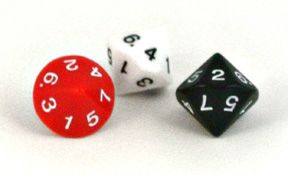
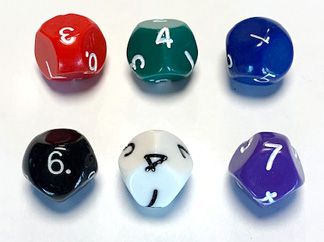
A whatif puzzle: negative mass
We saw how negative solutions found by Dirac's equations helped us discover antimatter. Let's see what happens if we play around similarly with laws of gravitation.
So far, we have not been able to experimentally observe the gravitational interaction b/w matter & antimatter. It is accepted that antimatter has a positive mass just like matter. However, let's say hypothetically we had a particle with negative mass interacting only gravitationally with another positive mass - what would happen?

Options:
- Attract each other
- Repel each other.
- Play tom-n-jerry towards right.
- Play tom-n-jerry towards left.
Epilogue
I hope you learnt something about how the world works at the most fundamental level, and you are curious to find out how the dynamics of a game of catan changes by replacing the regular dice with quantum dice! We shall uncover the rejuvenation effects of different dice on the gameplay of catan as well as seven faced dice 3D models another time.
The physics & maths of the quantum dice situation is not strictly 1:1. However, facts of physics presented are reasonably correct.
B.S: There are very few conclusively known properties of God - The inability to determine which dice in state-X & state-Y when two boson-ic dice consummate & their wave functions are dancing in harmony; is one of such properties unlikeomniscience&omni-*.
more B.S: DISCLAIMER - For the skeptics on above argument - please do not conclude that God is incapable to produce a regular polyhedron apart from the 5 platonic solids - it's a mere consequence of cartesian geometry.
